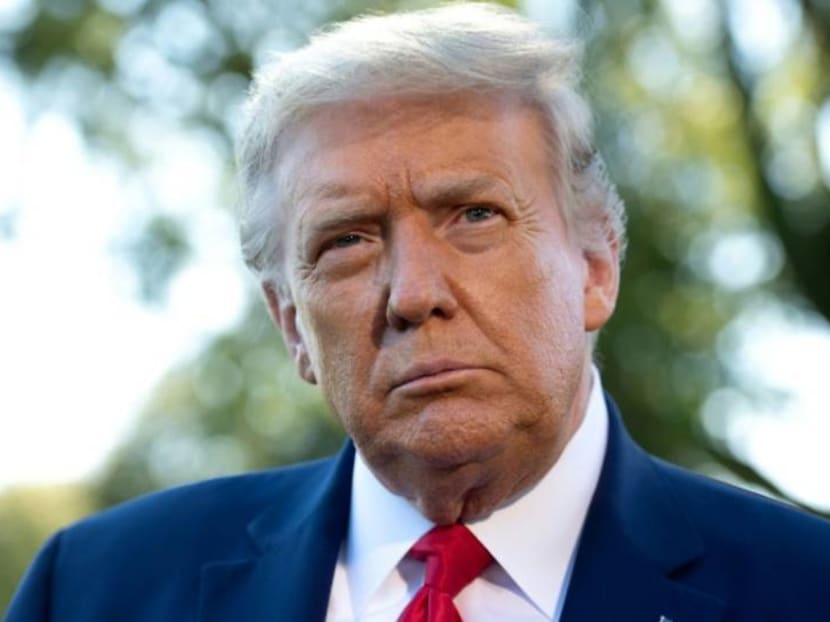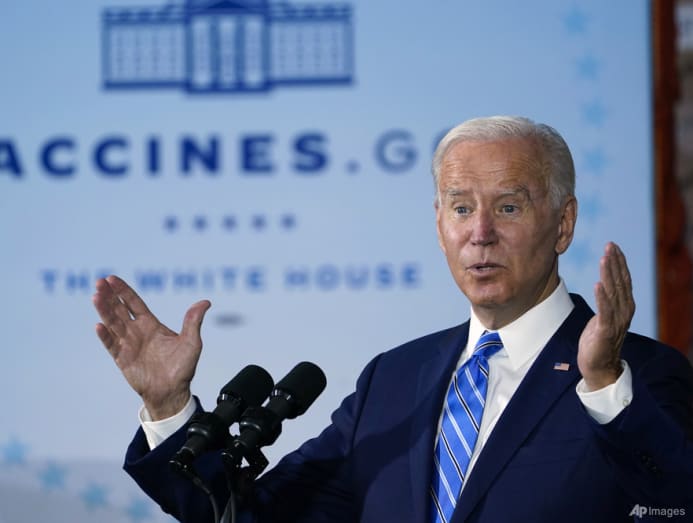Commentary: Why is former US president Donald Trump still so influential?
The effects of globalisation, the atmosphere of insecurity and other structural problems that gave rise to populism remain, meaning Trump will continue to influence US politics for a while, says Yale-NUS College’s Benjamin Schupmann.

SINGAPORE: The last year should have been the end of Donald Trump.
He lost the presidential election big, by over 7 million votes. He blamed his loss on his own party. He attacked fellow Republicans, including his own vice-president Mike Pence and senior state election officials.
He instigated a violent insurrection to try to overturn the election, becoming the first US president to be impeached twice.
Besides losing the presidential “bully pulpit,” Trump also lost his digital megaphone when Twitter and Facebook banned him from their platforms.
Yet Trump did not fade away. Trump is the frontrunner for the 2024 Republican nomination. He is a fundraising juggernaut.
This month’s off-year election demonstrated that Trump’s command over his base, the rural branch of the Republican Party, remains strong.
Other Republicans cannot afford to alienate him. If they seem to drift too far from his orbit, Trump threatens to wield his base like a cudgel and “primary” them.
When asked about the 2024 election, other Republican Presidential hopefuls dance around the question or declare outright that they will not run if Trump does.
Even Pence, who Trump threw to the mob, still clings feverishly to Trump. This all raises the following question: Why is Donald Trump still so influential?
EFFECTS OF GLOBALISATION EXACERBATED BY COVID-19
One reason is that the structural problems of US society that led to Trump’s election in the first place have not disappeared. The pandemic has aggravated many of them.
One structural problem has to do with the effects of the global economy. Although it benefits many, globalisation has led to stagnant wages and job displacement for some Americans.
Since the 2008 financial crisis, a significant number of lower- and middle-class Americans feel like they have fallen behind, economically and socially. The COVID-19 pandemic worsened this situation.
Millions of lower-income workers lost their jobs, especially those in the service sector. Others had to put themselves in physical danger to hold onto their jobs.
At the same time, those lower-income workers saw the wealthy become even wealthier, all while working from the comfort and safety of home. High levels of economic insecurity, especially in the face of expanding inequality, creates an atmosphere easily exploited by populists.

AMERICANS FEEL THREATENED
Another structural problem has to do with the effects of social and political change. Although many progressive changes to American society are unquestionably for the better, some feel threatened by them.
White Americans are told that they will soon be a minority. Some white men feel that their gender and race are now vilified by American public culture.
Political changes can also feel threatening. From the rise of China to the disastrous withdrawal from Afghanistan, Americans see signs that their era of global dominance is waning.
Climate change also poses an existential threat. As with economic insecurity, social change and instability can drive some into the arms of populists. This atmosphere can create a sense of pessimism about the future.
Some Americans believe that their society is in decline. They become nostalgic and yearn for a (romanticised) American golden age.
TRUMP’S POPULIST FORMULA: TAPPING INTO CULTURAL PESSIMISM
A significant part of Trump’s success lies in his ability to tap into these feelings of insecurity, threats, and cultural pessimism, promising to overcome them.
Trump promised to protect America from threatening change, to restore America to when it was “great”, and to restore his political base’s lost sense of self-worth. These promises still resonate loudly with his supporters today.
To be sure, Trump had his chance to fix those problems. His policies as president did little. For example, his isolationist and anti-foreigner policies tend to exacerbate underlying economic problems, leaving society even worse off.
Yet blaming foreigners works because it offers both a scapegoat and a simple solution, energising a populist base. Similarly, anti-progressive, anti-inclusive, and anti-environmental changes tend not to resolve underlying social problems.
But diverting the public’s attention toward culturally divisive issues, away from serious economic solutions, divides the left and unites the right. It is a political win for the right. Republicans made gains in this month’s elections using this playbook by politicising education and accusing Democrats of promoting Critical Race Theory in schools.
The Joe Biden administration has not done much yet to address the concerns that motivate Trump’s supporters. The pandemic continues to disrupt American society. Despite the massive amounts of government aid, inequality has only grown.
There are still 4 million jobs fewer in the American economy than before the pandemic began. Wages remain stagnant for many other lower-income Americans.
Voters still feel threatened by economic, social, political, and environmental problems. The longer Trump is out of office, the less voters will hold him responsible for failing to address them, and the more his promises of nostalgia and restoration will appeal to them.

PORTRAYING HIMSELF AS HERO OF THE FORGOTTEN AMERICAN BESIEGED BY ENEMIES
Besides his ability to exploit America’s structural problems, Trump remains influential because of his populist style, his mendacity and the amplification of those traits by social media.
Since his 2016 election, Trump has portrayed himself as the hero of the forgotten American besieged by enemies.
Those enemies include Congressional Democrats, traitorous “Republicans In Name Only” (RINOs), social and economic elites, the deep state, the liberal media, immigrants, foreign powers (especially the Chinese), and even the pandemic itself.
That portrayal appeals to some because of its simplistic good and evil narrative. It is also a lie.
Systematic lying was a defining feature of the Trump Presidency. It began with the lie that his inauguration crowd was “the largest audience to ever witness an inauguration.”
According to The Washington Post, Trump made a total of 30,573 false or misleading claims during his presidency.
Trump’s lying was a clever propaganda campaign. Saturating the public sphere with lies led some to become cynical about the truth. Some Americans’ perceptions of reality changed. They doubted whatever did not fit their preconceived beliefs. Rather than think critically about inconvenient facts, they rejected anything at odds with their worldview.
Social media amplifies traditional forms of lying and propagandising. Social media’s business model is built around user “engagement”. Outrage generates engagement.
Among other things, social media relies on algorithmically identifying content that generates high-arousal emotional reactions in its users, such as rage and fear and then promoting it. Any participation amplifies content, regardless of how one engages with it.
This then creates a vicious bottom-up cycle in which online platforms promote “engaging” content to other users, who react, broadening and further accelerating its promotion.
Social media has helped to create a new golden age for liars and propagandists. Trump, who has long understood that there is no such thing as bad publicity, has benefitted perhaps most of all.
THE BIG LIE
Four years of lies laid the foundation for “The Big Lie”: That the 2020 US presidential election was stolen through rampant fraud perpetrated by Trump’s enemies.
Today, 68 per cent of Republican voters believe “The Big Lie”, according to a recent study by the Public Religion Research Institute and the Brookings Institution.
This is not surprising. The public sphere is drowning in misinformation first seeded by Trump and his associates by more traditional media, then amplified from the bottom up as Trump’s supporters take to social media .
Those who believe the Big Lie believe that Trump is America’s legitimate president. They believe that he (and by extension themselves) suffers an injustice every day he is denied his rightful office. They believe that America’s enemies deliberately obstruct Trump, prolonging America’s social, cultural, economic and political problems.
And as long as the structural problems that give rise to populism remain and Trump and his supporters can exploit the design of social media to propagate his false narrative, Trump will continue to influence politics.
Benjamin A Schupmann is Assistant Professor of Social Sciences (Political Science) at Yale-NUS College. The views and opinions expressed herein are those of the author(s) and do not represent the views and opinions of Yale-NUS College or any of its subsidiaries or affiliates.












